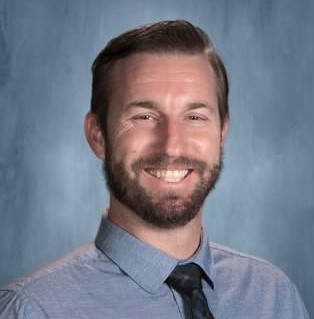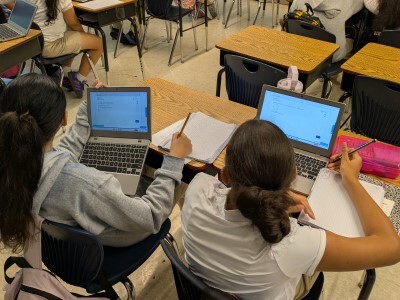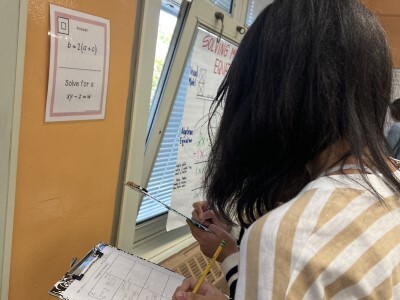Personalized Learning in Photography: Discovery, Innovation, and Growth
Topics
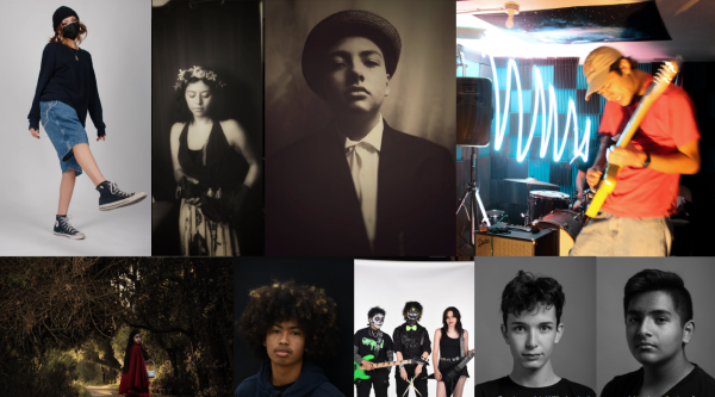
We’ve all had the experience of truly purposeful, authentic learning and know how valuable it is. Educators are taking the best of what we know about learning, student support, effective instruction, and interpersonal skill-building to completely reimagine schools so that students experience that kind of purposeful learning all day, every day.
Personalized learning in a photography course comes through unique, individual work products, but this teacher pushes for even more student ownership of the learning.
The faculty and staff at Mission Vista High School (MVHS), a district school in southern California, has been on a six-year journey (and counting) to transform classrooms through personal learning (PL). To build a shared understanding of personal learning (PL), our school adopted this definition from Allison Zmuda, Greg Curtis, and Diane Ullman in Learning Personalized: The Evolution of the Contemporary Classroom:
“A progressively student-driven model of education that empowers students to pursue aspirations, investigate problems, design solutions, chase curiosities, and create performances.”
We are figuring out how our students can have a voice in their learning, co-create learning opportunities with their teachers, work with peers to co-construct learning and understanding, and create their own self-directed, personalized pathways.
Will Salley, who teaches photography at MVHS, considers himself lucky to have the autonomy to experiment and, as he says, “do whatever I want to do and choose how I go about delivering instruction, as long as it falls within the standards.” He has always considered his teaching to be somewhat personalized, in part because his subject area lends itself well to applying artistic concepts to unique, individual work products. As he explains, “If the assignment is the rule of thirds, they’re going to take pictures and everybody’s going to do it in a different way, deciding where they shoot and how they choose to shoot it, within the parameters.”
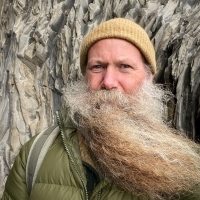
Will Salley
What first resonated for Will with respect to PL was thinking about ownership of learning as a “fluid and flexible” continuum. “Certain projects are going to be more teacher based and sometimes it’s going to be more student based.” However, after MVHS joined the district’s PL Challenge, he says, “The seeds were planted, and over time I started to look at what I could do to make [learning] more co-creative.” Here’s more from Will:
When I first thought about personalized learning and letting the students direct some of the work, it seemed like we were going to lose rigor or depth of knowledge. And that, because the students are generating some of this, it’s easier for the teacher. But it’s actually more work for the teacher because you have to have thought about all the contingencies and possibilities, all the things that might come up.
You’ve got a general idea or standard like “narrative,” but how are we going to go about doing that? How am I going to open the idea up to them? Well, I might ask, “What kind of stories or movies do you like?” or “What are some childhood memories?” and we’ll do a brainstorm to come up with four or five ideas in all these different ways. And so then, when I say, “Okay, now pick one of these that you might be able to use as a narrative about growing up,” we’ve already come up with the ideas of what they might be able to go out and shoot. I’ve already thought about all these possibilities. You’re still leading the horse to the water, right?
So it’s not easier by any means. It is harder, but the amount of buy-in that you get from the students when it’s their idea way outweighs the hard work. They’re engaged, they’re motivated to do stuff, and they’re jazzed. They’re going, and then it’s about letting them do their work and guiding them.
In a truly personal approach, we try to meet teachers where they are and work toward the schoolwide goal of PL as cannon-ballers, toe-dippers, and everything in between. Will now sees himself as more of a cannon-baller for personal learning, and he has shifted his instruction closer to the student agency side of the spectrum in intentional ways. Specifically, he now invites students to help design and set up the parameters and success criteria for their assignments. To illustrate, he describes a midterm project that he co-created with learners using words from the MVHS mission statement—discovery, innovation, and growth (DIG)—to guide the design process.
Discovery
Using reflections and brainstorming, Will focused first on discovery by having students generate ideas about what they had learned and discovered in the course so far—what had resonated and what projects and techniques they had liked.
Innovation
He next challenged the class to innovate by asking, “What could we do that would take some of those ideas that we just learned and then put them together in a new and different way?” For example, he says, “They might take a composition technique and a lighting technique and a concept and put them together to create something new.”

In Will’s classes, learners organize their thinking and planning by creating origami-style graphic organizers. This heart-shaped origami supports students to use the discovery-innovation-growth (DIG) process to design a project. (Courtesy of Will Salley)
Learn More: Check out Will’s playlist of videos on how to use origami organizers to support student learning and planning for projects, including the narrative midterm. For more, watch the PD video "Origami with Mr. Salley":
Growth
For Will, the most pronounced shift in his practice addresses the role of learners in demonstrating their growth. In response to virtual learning and other challenges associated with the COVID-19 pandemic, he wrestled with the question, “What is going to demonstrate that they understand the core concepts of things, the core standards, but without having to be so focused on whether they checked all the boxes?” The answer to the growth part of DIG, he decided, was allowing learners to set and propose in advance the expectations about how many techniques or how many different locations they would use, or how many pictures they would turn in.
“Some of them were going to take 500 pictures because they’re doing a music video,” he recalls. “And if they said they were going to turn in five photos, but it’s going to demonstrate all of the core parameters, then that was okay. They were allowed to personalize that and decide what it was going to be for them, as long as they could show that they took what they’d already learned, that they’d used it in a new way, and that they’d improved.”
In addition to co-designing the assignment and setting their parameters for the project, students also helped create a rubric that articulated the criteria for success. According to Will, looking at the rubric was a key part of each learner’s self-reflection at the end of the assignment. “I put it on them,” he says, “and asked them, ‘What’s your grade going to be on this project? Here’s the rubric you created.’ And if they gave themselves a four out of five, I would look at the rubric and ask them for elements of support.”
“It’s that co-creation part” that’s so powerful, he observes. “Giving them ownership and buy-in because, you know, they created it. It’s not top down.”
Related Posts
Supporting Students to Drive Their Learning in ELA - MVHS English department chair Michelle Daum explains her approach to personal learning: moving students toward independence and ownership of their learning, so they are prepared for their futures.
Personalized Learning in Social Science: Skills, Agency, and Relevance - Robert Chodola describes how personalized learning looks different in history compared to the high school electives he teaches at MVHS, but the goals are the same.
Personalized Learning and Math: Not Just about the Numbers - As MVHS math teacher and department chair Stacy Eyton personalizes learning in math, it's changing mindsets on what the subject is all about.
This article is an excerpt from the NGLC publication, Personal Learning at Mission Vista High School.
Image at top of Mission Vista High School student photography, credits:
Top Row
1. Skyler Haynes. Fashion Photography was the area of interest for Skyler in the Careers in Photography project. Her “client” was the school’s Fashion Club. She chose to do the photo shoot in the studio and feature the club members in their best school fashion.
2+3. Natalia Salazar. One of the PL projects that the Photo 1 class completes is the Famous Photographer project. Natalia chose Edward Steichen as her favorite photographer. After researching her photographer’s images to analyze his techniques and style, she produced the first series of images as self portraits using Steichen’s soft light, classical turn of the century styling and sepia toned images. After a class presentation and feedback she did a second shoot attempting to push the concepts and make it her own style. She chose to take portraits of her brothers playing with the camera angles to be more confrontational, but keeping the old styling and sepia toning.
4. Wyatt Butler. The narrative project is the first PL project in the Photo 1 class. Students use origami to help brainstorm prior knowledge (both about possible stories to convey, and camera techniques they just learned). Wyatt chose to tell a story about a garage band, using slow shutter speed to paint with light to help convey the energy of the music they were creating.
Bottom Row
1. Natalia Estudillo. The Photo 2 class had been learning a lot of new Photoshop selection techniques. For the midterm the students did a narrative project that used multiple images to montage in Photoshop Illustration. Natalia chose to tell the story of Little Red Riding Hood, featuring her sister in the classic red cape.
2. Ruben Avalos. This portrait was produced for the DIY background project. Students brought in items that could be used as a background for the photoshoot. It also incorporated open shade lighting to create soft light; and then was edited in the style of Annie Leibovitz which we were studying that week.
3. Crystal Hernandez. Rock the Hill is the largest event on campus. Photography students take band portraits for all of the performers prior to going on stage.
4. Kali Stewart & 5. Richmond Tangalan. Theater Headshots are produced by the Photo 2 class for all of the drama performances. It gives the students a chance to practice working with and directing a model with a very short time frame. The students retouch and print all of the images to hang in the foyer of the theater during the performances.

